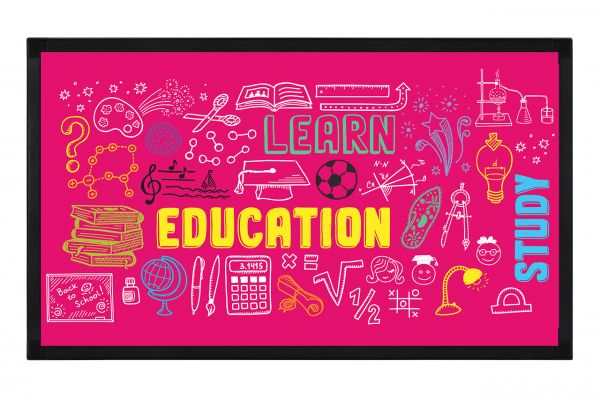
David Flintoft, Vestel’s Marketing Director, shared his views on education and technology with Education Today.
Concerns about the impact of too much screen time has driven much debate around the use of technology in schools. Research released by Microsoft at BETT this year, demonstrates that some education professionals still harbour doubts; in particular, 34 per cent think students spend too much time on devices already, while 28 per cent worry that classroom tech could prove a distraction.
Yet technologies which enable collaborative and interactive learning – such as interactive displays – may help to negate such concerns, while also delivering a range of additional benefits to pupils, teachers and schools.
Transforming the learning experience for pupils
Platforms like YouTube and Tik Tok, as well as gaming consoles such as Xbox and Nintendo Switch, give children access to worldly experiences on demand. Information can be accessed instantaneously; anywhere and through any device. For a pupil born into this digital age, the traditional “copy-off-the-whiteboard” learning method can be uninspiring.
Interactive displays encourage learning-by-doing, but they also provoke teaching in a visual language that generation Z understands. For example, you could point to Rome on a globe when discussing the Roman Empire, or you could use Google maps to zoom into the Colosseum, to show students a taste of Ancient Roman culture. The latter helps bring history to life, and this can be applied across the curriculum.
Interactive displays also allow students to get involved by touching the screen to zoom in and out, as well as working in groups – up to ten at one time – to complete tasks collaboratively and in front of the class. They’re also available in different sizes for other uses, such as workshops or assemblies with multiple classes.
Removing the admin burden for teachers
Engagement is an important factor for lesson plans, but technology has another vital function for teachers: reducing admin. For example, a traditional whiteboard requires constant cleaning, as well as the purchasing of new pens, cleaning products and a new whiteboard once it becomes ink-stained.
With the swipe of a palm, interactive whiteboards allow teachers to erase writing with minimal effort, and the absence of ink pens removes the risk of stains. Additionally, having a digitised whiteboard enables teachers to sync up their personal devices, as well as leverage apps, browsers and other screens, to improve the ease of visual teaching. Ultimately, technology can help teachers mitigate the time-consuming admin tasks, so they can focus on what they do best.
Improving school resources
It’s no secret that schools are under-resourced; working to strict time and financial margins. Technology has the potential to dramatically improve both. For example, printed textbooks are not only at risk of damage and loss, but they can also become dated very quickly, requiring the purchase of new copies and editions. The internet, however, enables free or cheap access to a wealth of resources which, at an operational level, will improve a school’s bottom line. Products such as interactive displays bring the online world into the classroom in an engaging and streamlined display.
The priority for technology buyers in schools is to source a trusted and reputable supplier. Product reliability is key for schools to benefit from technology; ensuring maximum impact for pupil learning, as well as helping teachers and schools to magnify the resources they have.
If you are interested in Vestel Interactive Panels please give us a call on 044 9672855






